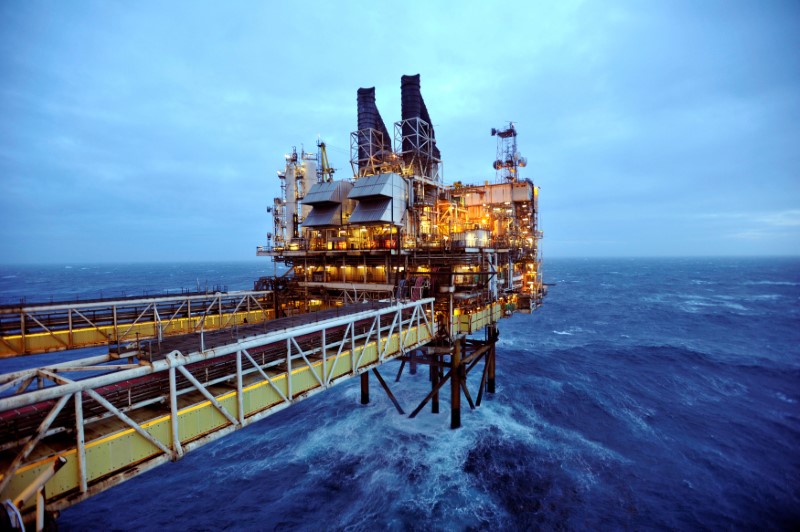By Amanda Cooper and Ron Bousso
LONDON (Reuters) - North Sea oil output is expected to jump by a net 400,000 barrels per day (bpd) or about a fifth in the next two years, defying gloomy forecasts for the oldest deepwater basin that produces the world's benchmark crude price.
Projects from the West Shetlands to the icy fringes of the Arctic Ocean aim to add 1.2 million bpd, Reuters research shows.
That will more than offset the decline in output from older fields in a region now producing about 2 million bpd.
The net rise in overall production is expected to be about 400,000 bpd by 2020, according to U.S. energy-focused investment bank Tudor, Pickering, Holt & Co.
The North Sea produces Brent and three other crudes - Forties, Oseberg, and Ekofisk - that make up the Brent futures benchmark. The region is expected to report its third annual production rise in a row in 2017, reversing years of sliding output.
Since production began in earnest in the 1960s, about 40 billion barrels of oil have been extracted from the North Sea.
A 50 percent drop in oil prices from above $100 (£77.5) a barrel in 2014 has forced some North Sea producers to sell assets. Others have adapted as they seek to extract more of the 20 billion barrels estimated to lie under Britain's North Sea zone alone.
"The drop in the oil price forced everyone to focus even more than they were on (production) uptime and operating efficiencies which have risen dramatically over the last two years," Premier Chief Executive Tony Durrant told Reuters.
"We've been at over 90 percent operating efficiency and a lot of the other players are very high as well. If you roll back to 2012-2013, then the North Sea had a shocking record of about 65 percent," he said.
North Sea relief - a map of major oil projects: http://fingfx.thomsonreuters.com/gfx/rngs/OIL-NSEA-PROJECTS/0100415X2J0/OIL-NSEA-PROJECTS-01.jpg
DEEP BLUE GIANTS
Reuters research shows a range of projects by majors and smaller companies coming onstream in the next two years or so.
The giant Johan Sverdrup project by Norway's Statoil (OL:STL) starts pumping 440,000 bpd in 2019, rising to 660,000 bpd by 2022.
BP is revitalising the ageing Schiehallion and Loyal fields off the Shetland Islands with its Quad 204 project, adding 130,000 bpd to production.
Mark Thomas, BP's regional president for the North Sea, said in September that BP's cost of production had fallen to about $16 or $17 a barrel from above $30 in 2014.
FGE analyst James Davis said oil firms had drawn up development plans for old fields and delayed decommissioning dates to increase output beyond expectations and at lower cost.
"There is the obvious hurdle of limited remaining reserves, but operators appear to be positioning themselves to extract as much as possible out of what is left, at relatively low costs," he said.
Small explorers have tapped existing infrastructure to make little fields profitable, often relying on new technology.
Hurricane Energy, which specialises in extraction from naturally fractured rock, last week more than doubled the amount of oil it estimated was recoverable from its Lancaster field.
"The game has changed, but the North Sea hasn't gone away," Malcolm Graham-Wood of consultant Hydrocarbon Capital told online markets platform StockTube in March.
In January and February, the North Sea market attracted about $4 billion in acquisitions. But industry lobby Oil & Gas UK has said that without sustained investment as many as 80 oilfields could shut by 2020.

"We are in a period where we are staving off the overall decline in the North Sea, partly through efficiencies, partly through a group of new projects," FGE's Davis said.